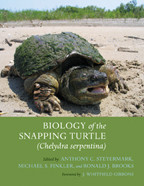The smallest of the sea turtles, olive and Kemp’s ridleys are the only marine turtles to exhibit mass-nesting behavior, known as arribadas. This fascinating phenomenon, during which one could literally walk shell-to-shell across a beach, is considered one of the most amazing wonders of nature.
In Biology and Conservation of Ridley Sea Turtles, Pamela T. Plotkin brings together the world’s experts on the genus Lepidochelys to present the first comprehensive, book-length examination of these fascinating animals. Featuring the writings of noted experts including Peter C. H. Pritchard, Jack...
The smallest of the sea turtles, olive and Kemp’s ridleys are the only marine turtles to exhibit mass-nesting behavior, known as arribadas. This fascinating phenomenon, during which one could literally walk shell-to-shell across a beach, is considered one of the most amazing wonders of nature.
In Biology and Conservation of Ridley Sea Turtles, Pamela T. Plotkin brings together the world’s experts on the genus Lepidochelys to present the first comprehensive, book-length examination of these fascinating animals. Featuring the writings of noted experts including Peter C. H. Pritchard, Jack Frazier, Rene Márquez-M., and Donna J. Shaver, the volume synthesizes over a half century of research. With chapters focused on evolution, development, genetics, physiology, reproduction, migration, and conservation, this book combines a wealth of knowledge and describes an agenda for further research.
An integral part of oceanic ecosystems, ridleys present challenges for conservation. Olive ridleys are abundant in some areas and declining in others, whereas Kemp’s ridleys are endangered but slowly recovering. Both face beach-based threats and are prone to capture by commercial fisheries. Here Plotkin and her colleagues reveal the nature of these species and the steps needed to make sure they remain a permanent part of the marine environment.






